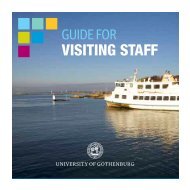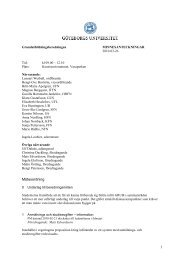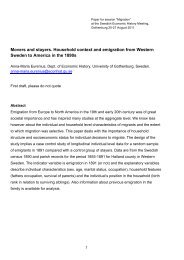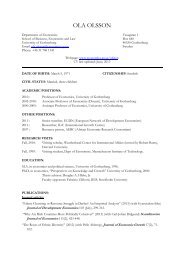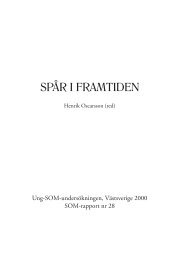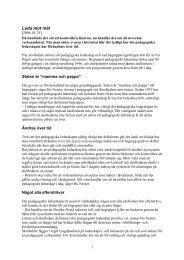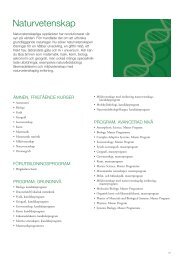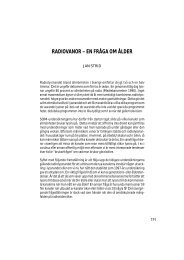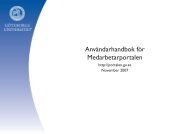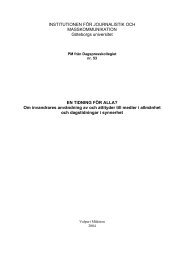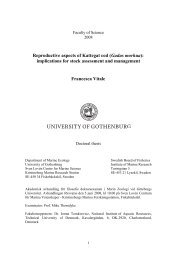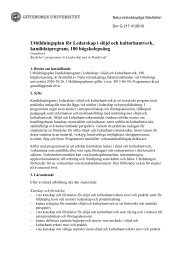development of small-scale intermodal freight transportation in a ...
development of small-scale intermodal freight transportation in a ...
development of small-scale intermodal freight transportation in a ...
You also want an ePaper? Increase the reach of your titles
YUMPU automatically turns print PDFs into web optimized ePapers that Google loves.
economist, his and RUTTEN’s research follow the eng<strong>in</strong>eer<strong>in</strong>g approach that HULTÉN<br />
(1997, p. 20) f<strong>in</strong>ds suitable for applied fields <strong>of</strong> research with a strong multi-discipl<strong>in</strong>ary<br />
element. HULTÉN presents the approach <strong>in</strong> his recently published dissertation on conta<strong>in</strong>er<br />
management:<br />
“… an eng<strong>in</strong>eer<strong>in</strong>g approach to science would be to first work as a natural scientist and<br />
analyse the complex system under study to obta<strong>in</strong> a thorough understand<strong>in</strong>g <strong>of</strong> it and<br />
then search for f<strong>in</strong>d<strong>in</strong>gs from other (more basic) sciences and as an eng<strong>in</strong>eer synthesise<br />
these f<strong>in</strong>d<strong>in</strong>gs and apply them to the complex system under study.”<br />
(HULTÉN, 1997, p. 20)<br />
Although this was not expressed until the ma<strong>in</strong> part <strong>of</strong> my research was carried out, it is<br />
considered as a good description <strong>of</strong> what I have actually done as well as <strong>of</strong> the research tradition<br />
generally applied at our department. Nevertheless, if this was to be a pure eng<strong>in</strong>eer<strong>in</strong>g<br />
effort, the work would be carried out follow<strong>in</strong>g a strict path to the solution <strong>of</strong> the ultimate<br />
task <strong>of</strong> implement<strong>in</strong>g new <strong>small</strong>-<strong>scale</strong> <strong><strong>in</strong>termodal</strong> <strong>transportation</strong> systems. Here – as <strong>in</strong><br />
all research – an additional objective <strong>of</strong> produc<strong>in</strong>g knowledge is fulfilled.<br />
In short, I confess to the systems approach and the conceptualis<strong>in</strong>g ideal when I present<br />
conceptual system models and descriptions open for use by other researchers. With an eng<strong>in</strong>eer<strong>in</strong>g<br />
approach I attack some more specific issues further down <strong>in</strong> the systems hierarchy.<br />
My op<strong>in</strong>ion is that the choice <strong>of</strong> methods is subord<strong>in</strong>ate to the research questions,<br />
which are identified <strong>in</strong> an <strong>in</strong>ductive manner. The choices <strong>of</strong> specific and narrower methods<br />
at lower system levels are described and justified as they appear <strong>in</strong> the text.<br />
1.4.2 Data and <strong>in</strong>formation gather<strong>in</strong>g<br />
In this dissertation, the framework <strong>of</strong> data, <strong>in</strong>formation and knowledge as presented by<br />
POLEWA et al. (1997, p. 158) is used. The conceptual model <strong>of</strong> the <strong>in</strong>formation value<br />
cha<strong>in</strong>, as shown <strong>in</strong> the figure below, <strong>in</strong>cludes data as the raw material, <strong>in</strong>formation as the<br />
structured and communicable semi-manufactured product <strong>of</strong> data process<strong>in</strong>g and knowledge<br />
as the f<strong>in</strong>ished product where <strong>in</strong>formation has been transformed <strong>in</strong>to a mean<strong>in</strong>gful<br />
form by use <strong>of</strong> analysis, <strong>in</strong>terpretation based upon earlier experience as well as modell<strong>in</strong>g.<br />
27



